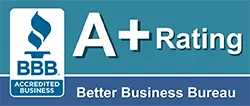In today’s fast-paced business environment, the need for corporate relocations has become more prevalent than ever. Companies are increasingly recognizing the importance of strategic moves that not only enhance operational efficiency but also align with their long-term goals. As such, understanding the latest trends in corporate relocation is essential for businesses looking to stay ahead of the curve. This article explores the key trends shaping corporate moves and the strategies that can facilitate quick turnarounds.
The Rise of Remote Work and Its Impact on Relocation
The COVID-19 pandemic has dramatically altered the landscape of work, leading to a significant rise in remote work. This shift has had profound implications for corporate relocations, as companies reassess their physical office needs.
Decentralizing Office Spaces
As more organizations embrace hybrid work models, the need for large, centralized office spaces is diminishing. Businesses are now opting for smaller, flexible office environments that can accommodate a fluctuating number of employees. This trend allows companies to reduce overhead costs while still providing a collaborative space for teams to gather when necessary. Moreover, the design of these new office spaces is evolving to include more communal areas, breakout rooms, and even wellness zones, which cater to the diverse needs of a modern workforce. By fostering a more adaptable work environment, companies can enhance employee satisfaction and productivity, ultimately leading to a more engaged workforce.
Relocation to Talent Hubs
With remote work enabling employees to work from anywhere, companies are increasingly relocating to areas with a high concentration of talent. Cities that offer a vibrant lifestyle, lower living costs, and access to skilled workers are becoming attractive destinations. This trend not only helps in attracting top talent but also fosters a sense of community among employees. Additionally, the rise of remote work has prompted a reevaluation of what constitutes a ‘talent hub.’ While traditional tech cities like San Francisco and New York remain popular, smaller cities and even rural areas are gaining traction as viable alternatives, offering unique cultural experiences and a more balanced lifestyle. This shift has the potential to redistribute economic activity and promote growth in previously overlooked regions, creating a more equitable job market across the country.
Technology-Driven Relocation Solutions
As businesses navigate the complexities of relocation, technology is playing a pivotal role in streamlining the process. From virtual tours to advanced project management tools, technology is transforming how companies approach corporate moves. The integration of these tools not only enhances efficiency but also fosters a more collaborative environment among stakeholders involved in the relocation process.
Virtual Reality and Augmented Reality
Virtual reality (VR) and augmented reality (AR) are revolutionizing the way businesses scout for new locations. These technologies allow decision-makers to conduct virtual tours of potential office spaces, eliminating the need for time-consuming in-person visits. This not only speeds up the decision-making process but also reduces travel costs. Furthermore, AR can overlay essential information about the space, such as dimensions and potential layout options, directly onto the real-world environment, providing a comprehensive view that aids in visualizing the new workspace.
Data Analytics for Informed Decisions
Data analytics tools are enabling companies to make informed decisions regarding their relocation strategies. By analyzing data on employee preferences, market trends, and economic indicators, businesses can identify the most suitable locations for their operations. This data-driven approach minimizes risks and enhances the likelihood of a successful move. Additionally, predictive analytics can forecast future trends in real estate and labor markets, allowing companies to stay ahead of the curve and adapt their strategies accordingly. By leveraging these insights, organizations can not only optimize their relocation efforts but also enhance employee satisfaction and retention by choosing locations that align with their workforce’s needs and preferences.
Cloud-Based Project Management Tools
Cloud-based project management tools are also making a significant impact on the relocation process. These platforms facilitate real-time collaboration among team members, enabling seamless communication and coordination across different departments and locations. With features like task assignments, progress tracking, and document sharing, businesses can ensure that every aspect of the move is meticulously planned and executed. This level of organization minimizes disruptions to daily operations and helps maintain productivity during the transition. Moreover, these tools often come equipped with analytics dashboards that provide insights into project timelines and budget adherence, allowing for quick adjustments as needed.
Employee Engagement and Communication
Incorporating technology into the relocation process also extends to employee engagement and communication. Companies are utilizing mobile applications and online platforms to keep employees informed and involved throughout the move. These tools can provide updates on timelines, resources available for relocation assistance, and even forums for employees to voice their concerns or ask questions. By fostering an open line of communication, businesses can alleviate the stress often associated with relocation and ensure that employees feel valued and supported during this significant transition. This proactive approach not only enhances the employee experience but also contributes to a smoother relocation overall.
Employee-Centric Relocation Policies
In an era where employee satisfaction is paramount, organizations are rethinking their relocation policies to prioritize the needs of their workforce. Tailored relocation packages are becoming increasingly popular as companies strive to create a seamless transition for their employees.
Comprehensive Support Systems
Companies are recognizing that relocation can be a stressful experience for employees. As a result, many are offering comprehensive support systems that include assistance with housing, schooling, and even cultural integration. By providing these resources, businesses can alleviate some of the burdens associated with moving, leading to a smoother transition.
Flexible Relocation Packages
Flexibility is key when it comes to relocation packages. Organizations are now offering customizable options that cater to the unique needs of each employee. Whether it’s financial assistance, temporary housing, or help with finding local services, tailored packages ensure that employees feel supported throughout the relocation process.
Sustainability in Corporate Moves
As environmental concerns continue to rise, sustainability has become a critical consideration in corporate relocations. Companies are increasingly seeking ways to minimize their carbon footprint during the moving process.
Green Office Spaces
Many organizations are prioritizing eco-friendly office spaces in their relocation plans. This includes seeking out buildings that meet sustainability certifications, such as LEED (Leadership in Energy and Environmental Design). By choosing green office spaces, companies not only contribute to environmental preservation but also enhance their brand image.
Eco-Conscious Moving Practices
In addition to selecting sustainable office locations, businesses are adopting eco-conscious moving practices. This includes using biodegradable packing materials, optimizing transportation routes to reduce emissions, and recycling old office equipment. These practices reflect a commitment to sustainability and resonate with environmentally conscious employees and clients alike.
Globalization and Cross-Border Relocations
As businesses expand their reach beyond domestic borders, cross-border relocations are becoming increasingly common. Navigating the complexities of international moves requires careful planning and consideration.
Cultural Adaptation and Training
When relocating employees to new countries, cultural adaptation is a crucial factor. Companies are investing in training programs that help employees acclimate to their new environments. This includes language courses, cultural sensitivity training, and support networks to ease the transition. Such initiatives not only enhance employee satisfaction but also improve overall productivity.
Legal and Compliance Considerations
Cross-border relocations come with a myriad of legal and compliance challenges. Organizations must navigate visa regulations, tax implications, and labor laws in the host country. Engaging legal experts and relocation specialists can help companies ensure compliance and avoid costly pitfalls during the move.
Agility and Quick Turnarounds
In an ever-changing business landscape, agility is essential. Companies must be able to adapt quickly to market demands, which often necessitates rapid relocations. Developing strategies for quick turnarounds is vital for maintaining competitiveness.
Streamlined Processes
To achieve quick turnarounds, organizations are focusing on streamlining their relocation processes. This includes creating standardized procedures, leveraging technology for efficiency, and establishing clear communication channels among all stakeholders. By minimizing bureaucratic hurdles, companies can expedite the relocation timeline.
Proactive Planning and Contingency Strategies
Proactive planning is key to ensuring a smooth relocation. Companies are encouraged to develop contingency strategies that account for potential challenges, such as delays in securing office space or unexpected employee needs. By anticipating obstacles, businesses can respond swiftly and effectively, minimizing disruptions to operations.
Conclusion: Embracing Change in Corporate Relocation
The landscape of corporate relocation is evolving rapidly, driven by factors such as remote work, technological advancements, and a focus on sustainability. As businesses navigate these changes, it is essential to stay informed about the latest trends and best practices. By adopting tailored relocation strategies that prioritize employee needs and environmental considerations, companies can ensure successful moves that align with their long-term objectives.
Ultimately, embracing change and being adaptable will be the cornerstone of successful corporate relocations in the future. Organizations that invest in innovative solutions and prioritize the well-being of their employees will not only thrive in their new locations but also foster a culture of resilience and growth.
















